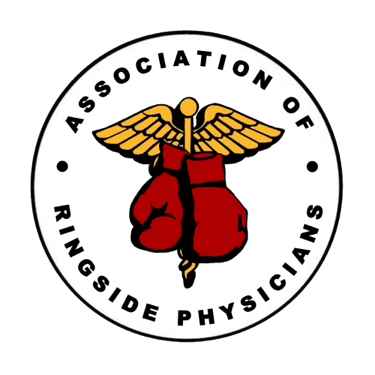Consensus statement from the ARP on concussion management in combat sports
What did the authors study: The Association of Ringside Physicians (ARP) has set forth a consensus statement establishing concussion management guidelines for use in combat sports (boxing and MMA).
Guidelines for the return of a concussed combat sports athlete to competition (return to fighting
protocol) are also provided.
Who did the authors study: The guidelines provided by the authors relate to concussion managementof a combat sports athlete.
Methods: The ARP is an international, non-profit organization dedicated to the health and safety of the combat sports athlete. The consensus statement is an amalgamation of current recommendations on concussion in non-combat sports with the current best practices in combat sports and the collective expertise and experience of the authors having provided ringside medical coverage over many years.
The guidelines were created by a small task force of authors subspecializing in sports-related
concussion, edited and finally agreed on by the entire ARP Board.
Results: The following guidelines for concussion management and return to sports of a combat sportsathlete are put forth:
Suspensions and concussion management
► If a fighter is exhibiting signs of a concussion during a bout, the fight should be stopped. These signs include but are not limited to headache, confusion, blurred/double vision, nausea/vomiting and balance/gait issues.
► If a combat sports athlete sustains a TKO secondary to blows to the head, it is recommended that he or she be suspended from competition for a minimum of 30 days. It is also recommended that the fighter refrain from sparring for 30 days as well.
► If a combat sports athlete sustains a KO without LOC secondary to blows to the head, it is
recommended that he or she be suspended from competition for a minimum of 60 days. It is also
recommended that the fighter refrain from sparring for 60 days as well.
► If a combat sports athlete sustains a KO with LOC secondary to blows to the head, it is recommended that he or she be suspended from competition for a minimum of 90 days. It is also recommended that the fighter refrain from sparring for 90 days as well.
► All combat sports athletes, including the winners, should be evaluated for signs and symptoms of concussion post bout. Evaluation should be performed immediately post bout ringside but also later repeated in a quieter, controlled environment like the dressing room.
► Combat sports athletes may participate in non-contact training and conditioning 1week after
sustaining a concussion or loss via TKO/KO secondary to head strikes, provided his or her symptoms are improving and do not increase in severity with activity. A gradual and graded activity progression of increased intensity is recommended, starting with light aerobic activity progressing to more rigorous/combat sports-specific activity and finally sparring when symptoms have completely resolved.
► Under no circumstances should a combat sports athlete compete or engage in sparring activity or competition if he or she is experiencing signs and symptoms of concussion.
In addition, the ARP consensus statement makes the following good practice recommendations:
1. A combat sports athlete’s suspension should continue until a specialist physician trained in
concussion management clears the fighter.
2. All combat sports athletes should undergo a validated NP evaluation with the initial test serving
as a baseline. If possible, vestibular/ocular and balance baseline testing is also recommended.
Repeat baseline testing should occur annually. If there is any decline, it is recommended that a
physician trained in brain injuries and concussion management evaluate the athlete.
3. All combat sports athletes and their coaches/trainers should be educated and trained to
recognize the signs and symptoms of concussion. If a combat sports athlete is experiencing any
signs or symptoms of a concussion during training or competition, he or she should remove
themselves from contact activities and seek immediate evaluation by a healthcare professional.
What did the authors conclude: The ARP guidelines are recommendations designed to assist ringside physicians, fighters, trainers, promoters, sanctioning bodies, governmental bodies and others in making concussion management good practice decisions.
Article
Neidecker J, Sethi NK, Taylor R, Monsell R, Muzzi D, Spizler B, Lovelace L, Ayoub E, Weinstein R, Estwanik J, Reyes P, Cantu RC, Jordan B, Goodman M, Stiller JW, Gelber J, Boltuch R, Coletta D, Gagliardi A,Gelfman S, Golden P, Rizzo N, Wallace P, Fields A, Inalsingh C.
Concussion management in combat sports: consensus statement from the Association of Ringside
Physicians.Br J Sports Med. 2018 Jul 26. pii: bjsports-2017-098799. doi: 10.1136/bjsports-2017-098799.
To access this free article: https://bjsm.bmj.com/content/early/2018/07/26/bjsports-2017-098799.long
